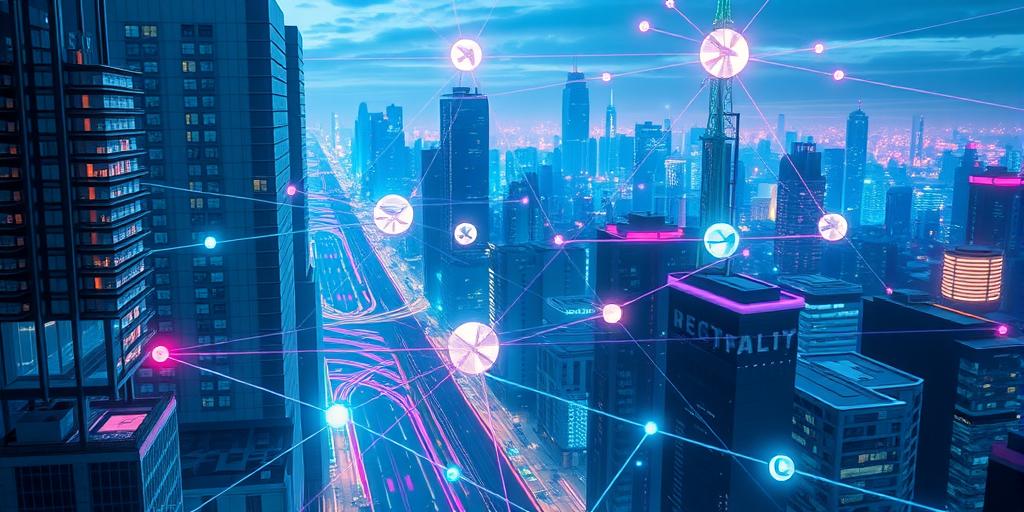Ever wondered how those seemingly magical IoT sensors collect and share their data? It’s more fascinating than you think! From smart homes to industrial automation, the seamless flow of data is the heartbeat of the Internet of Things. This comprehensive guide will unlock the secrets behind how IoT sensors gather and transmit data, exploring the technologies and processes that power this revolutionary technology. Prepare to be amazed by the ingenuity and complexity behind the scenes!
Understanding the Fundamentals of IoT Sensor Data Acquisition
Before diving into the intricate details, it’s crucial to grasp the core concepts. IoT sensors are the eyes and ears of the IoT world. These miniature devices measure physical phenomena like temperature, pressure, humidity, light, motion, and more. But how do they actually translate these physical measurements into data that computers can understand? The magic lies in the sensor’s transducer, which converts the physical signal into an electrical signal, often a voltage or current. This electrical signal is then processed by an analog-to-digital converter (ADC), turning it into a digital format that computers can interpret. Think of it as a translator, converting the sensor’s ‘language’ into a form understandable by the digital realm. Different types of sensors, like accelerometers, gyroscopes, and GPS modules, use different methods of data acquisition and signal processing, tailoring them to their specific application needs. The selection of the right sensor greatly impacts the efficiency and accuracy of data collection.
Types of IoT Sensors and Their Data Acquisition Methods
The sheer variety of IoT sensors is astonishing! Each type utilizes unique methods to gather data:
- Temperature Sensors: These sensors, often based on thermistors or thermocouples, measure temperature changes by detecting variations in electrical resistance or voltage.
- Pressure Sensors: Pressure sensors use various techniques such as capacitive, piezoresistive, or strain gauge methods to measure pressure differences.
- Humidity Sensors: These sensors commonly employ capacitive or resistive sensing to measure the amount of water vapor in the air.
- Light Sensors: Photodiodes or phototransistors are commonly used to detect the intensity of light.
- Motion Sensors: Accelerometers and gyroscopes detect movement and orientation by measuring changes in acceleration and angular velocity. They are used in many applications like smartphones, fitness trackers, and even self-driving cars.
The specific data acquisition technique utilized depends on the sensor type and its intended purpose. Understanding these intricacies unlocks a whole new appreciation for this technology.
Data Transmission: Getting the Information Where It Needs To Go
Once the data is gathered and digitized, the next crucial step is its transmission to a central processing unit. This could be a local server, a cloud platform, or a remote data center. A variety of communication protocols facilitate this transfer, each with its own advantages and drawbacks. Choosing the right transmission method is crucial for ensuring reliable data transfer while meeting requirements for power consumption and bandwidth. Here are some of the most common methods:
Wireless Communication Protocols for IoT Data Transmission
The realm of wireless communication for IoT devices is rich and varied, offering many options based on factors like distance, data rate, power consumption, and cost. Some of the popular protocols include:
- Wi-Fi: Ideal for high-bandwidth applications, but it has higher power consumption and may not be suitable for all applications.
- Bluetooth: A low-power, short-range solution perfect for many consumer IoT devices.
- Zigbee: A low-power, mesh networking protocol, well-suited for applications where many devices need to communicate over longer distances.
- LoRaWAN: A long-range, low-power wide-area network (LPWAN) protocol perfect for applications requiring long-range communication with low power consumption. Examples include smart agriculture, industrial monitoring and smart cities.
- NB-IoT and LTE-M: Cellular-based LPWAN technologies ideal for large-scale IoT deployments.
The choice of communication protocol is determined by the specific application requirements. Factors such as range, data rate, power consumption, and security considerations all play vital roles in this decision. This careful selection ensures reliable and efficient data transfer.
Security Considerations in IoT Data Transmission
As IoT devices become increasingly prevalent, security is paramount. The transmission of sensitive data must be protected against unauthorized access and tampering. Several strategies are employed to secure IoT data transmission:
Safeguarding IoT Sensor Data
Security mechanisms play an integral role in protecting IoT devices and data:
- Encryption: Encrypting data both during transmission and at rest protects it from unauthorized access. Algorithms like AES are frequently employed.
- Authentication: Verifying the identity of devices and users ensures only authorized parties can access data.
- Firewall: Firewalls filter network traffic, preventing unauthorized access to IoT devices and their associated networks.
- Intrusion Detection Systems (IDS): IDS monitor network traffic for suspicious activities and alert administrators to potential security breaches. These are used to detect anomalies and prevent attacks.
Implementing robust security measures is essential to maintain the integrity and confidentiality of IoT sensor data. This is increasingly vital as the number and variety of IoT devices grow exponentially.
The Future of IoT Sensor Data Acquisition and Transmission
The field of IoT sensor technology is constantly evolving. Advances in sensor miniaturization, energy harvesting, and communication protocols promise to further enhance the capabilities and efficiency of IoT systems. Research is focused on developing more energy-efficient sensors with improved data processing and transmission capabilities. Artificial intelligence (AI) and machine learning (ML) are also playing increasingly important roles in data analysis and interpretation. The future of IoT looks bright, promising even more powerful and sophisticated applications powered by cutting-edge technology. This includes improvements in wireless standards, new materials and energy efficient designs.
Ready to dive into the exciting world of IoT sensor technology? Start exploring the endless possibilities today!




